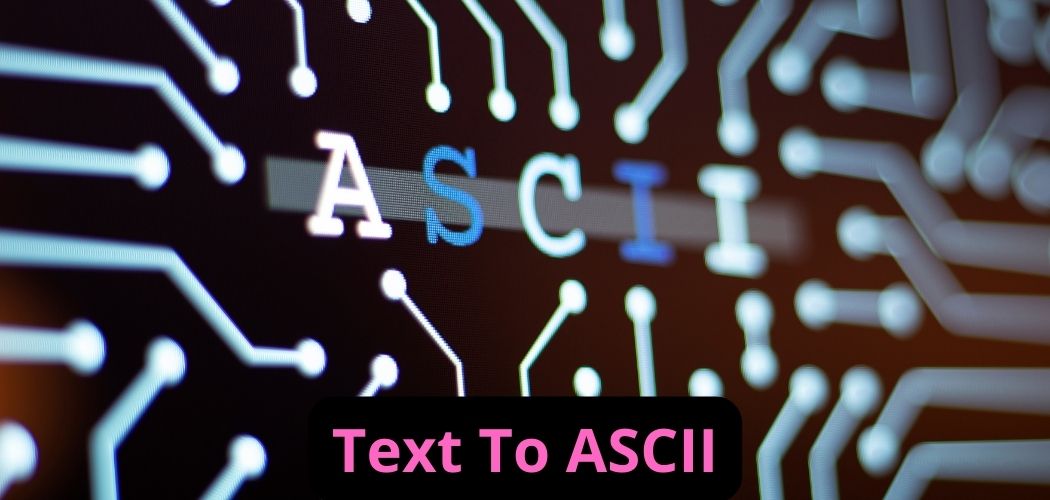Text To ASCII
Convert plain text into ASCII code effortlessly with our Text to ASCII Converter. Ideal for developers, students, and tech enthusiasts, this tool provides a quick, accurate transformation of any text into its ASCII representation, enhancing data encoding and software compatibility.
Share on Social Media:
Text To ASCII Converter
To conduct cross-browser testing, you can use a text to ASCII converter. To verify that Unicode characters are not accepted in your web application (e.g., email field or age), convert the text to ASCII codes and ensure all values are below 255. If a code value exceeds 255, it likely means the input contains a Unicode symbol.
There are other uses for an ASCII code converter. For example, in forums, spoilers are encoded in ASCII, requiring users to decode these values to read the answer. Subsequently, they will need to debug input data by checking numeric values.
Transforming text into ASCII is a basic computing process that reveals how characters are encoded within computers. This conversion is achieved using a simple method known as the ASCII encoding method. Here is a step-by-step guide to understand and perform this conversion:
What is ASCII Code, What is it For, and Why is it Important?

ASCII code is an integral part of computers. The text to ASCII converter allows you to convert any string to ASCII. To get the ASCII code, simply type or paste your text into the input box and then click the convert button. It's a simple and efficient tool that can be used by anyone.
Computers and other electronic devices primarily interact with numbers and various codes. This tool can be used to convert any string into ASCII code if you are writing a program. ASCII is a special type of code that computers use to store standard text. This means each letter is assigned an ASCII number. Up to 256 characters can be assigned in the standard ASCII format.
It's crucial to note that ASCII codes are used to store all text and characters within computer software. Therefore, it's understandable that simple strings must be converted to ASCII under different conditions to access the stored information. ASCII codes are a way to represent characters and data that computers can understand. These codes are usually managed by IT specialists and developers with little or no difficulty.
Essentially, ASCII converts the alphabet into numeric values since computer systems only handle binary code (0 and 1) to represent their logical operations. Each character (letter, symbol, or even space) corresponds to an eight-bit binary string. This coding is crucial for managing typographic devices like keyboards and is nearly universally used by current computer systems.
Understanding the Basics
ASCII, short for American Standard Code for Information Interchange, is a character encoding standard based on the Latin alphabet, similar to that used in modern English. It originated as a modification of the coding system used in telegraphy until 1963, updated by the American Standards Association (ASA). First published in 1967 and last updated in 1986, ASCII initially employed a 7-bit encoding to represent characters, with an additional bit for error checking, totaling 8 bits or one byte.
- ASCII System: ASCII uses a set of 128 characters, including letters, numbers, and symbols. Each character is represented by a unique 7-bit binary code.
- Character Encoding: ASCII is a character encoding standard used commonly in computers and other devices to represent text.
The ASCII Encoding Method
This method involves identifying the ASCII value corresponding to each character in the text. These ASCII values are the numerical representation of the characters.
Detailed Conversion Process
- Identify the Character: Start with the character you want to convert.
- Find ASCII Value: Use an ASCII chart to find the binary code or numerical value associated with that character.
- Record the ASCII Value: Note the ASCII value. This will be part of the ASCII encoded string.
- Repeat: Continue this process for each character in the text.
- Compile the ASCII Values: The complete ASCII encoded string of the text is the sequence of ASCII values.
Extended ASCII and ASCII Art
As demand for broader use cases grew, extended versions of ASCII were developed to include characters from languages other than English and specialized mathematical, logical, and scientific descriptors. ASCII art also became popular; these are images created by strategically placing ASCII strings on a page, which form recognizable patterns or pictures from a distance.
ASCII Examples
To illustrate, here are ASCII representations of common characters:
- 'A': 0100 0001
- 'C': 0100 0011
- '!': 0010 0001
- '#': 0010 0011
- '/': 0010 1111
- 'K': 0100 1011
- 'k': 0110 1011
- 'X': 0101 1000
- 'x': 0111 1000
- '[': 0101 1011
- '=': 0011 1101
- 'Z': 0101 1010
- 'z': 0111 1010
- ':': 0011 1010
- ',': 0010 1100
- '.': 0010 1110
- '0': 0011 0000
- '6': 0011 0110
- '9': 0011 1001
- '+': 0010 1011
- '-': 0010 1101
- ']': 0101 1101
This overview provides a clear understanding of how ASCII functions as a foundational element in computer systems, facilitating both simple and complex data processing and display.
Example of Conversion
Let’s convert the word "HELLO" into ASCII:
- 'H' -> 72
- 'E' -> 69
- 'L' -> 76
- 'L' -> 76
- 'O' -> 79
Reading these values together, we get 72 69 76 76 79. Thus, the ASCII representation of "HELLO" is 72 69 76 76 79.
Conclusion
Converting text to ASCII is a crucial skill in computing, providing insights into how computers interpret and store text. The ASCII encoding method allows anyone to translate characters into a language that computers understand, bridging the gap between human text and computer binary code. This systematic approach ensures accuracy and provides a fundamental understanding of text encoding.
Other very useful tools for SEO: